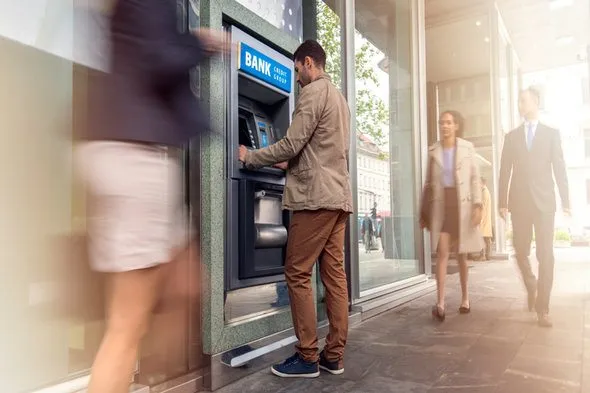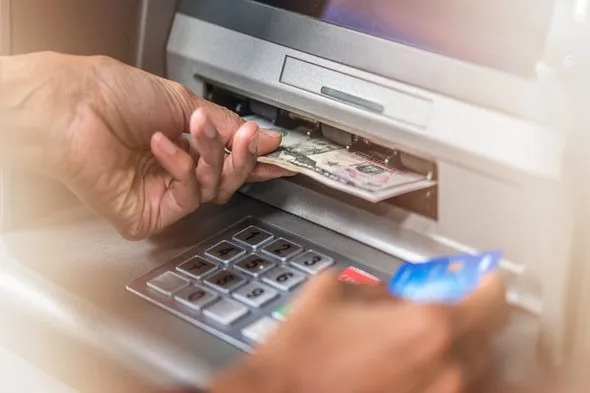When it comes to withdrawing money from an ATM, you are limited in the amount you can withdraw in a single day. You are also subject to the amount of money you spend with your debit card each day. All banks impose these limits, both for practical and security reasons. These limits prevent thieves from withdrawing and spending all your money. Additionally, banks can only keep a limited amount of cash on hand to distribute. The daily ATM withdrawal and debit purchase limits depend on your bank and the type of account you have.
Do you have questions about how banking fits into your larger financial plan? Speak with a financial advisor.
Average Daily ATM Withdrawal Limits
Daily ATM withdrawal limits range from around $300 to over $1,000 in rare circumstances. Simpler checking accounts tend to have lower limits than a premium or elite checking account. Student accounts also have lower limits to help students better manage their money. Keep in mind that these limits apply to checking accounts, as savings and money market accounts often have their own set of rules.
The chart below lists the daily ATM withdrawal as well as the daily debit purchase limits for accounts at popular banks. Rates may differ from what is listed depending on the specific type of account you have. If you have a different account or bank or are unsure about your limits, you can always call your bank or refer to your account documents.
| Bank | Daily ATM Withdrawal Limit | Daily Debit Purchase Limit |
| Bank of America | $1,000 or 60 individual bills | $1,000 (varies based on account) |
| Capital One | $5,000 | $5,000 |
| Chase | $500-$3,000 | $3,000 |
| PNC | $2,500 | $2,000-$5,000 |
| Santander | $2,500 | $2,500-$11,500 |
| U.S. Bank | Varies based on account | Varies based on account |
| Wells Fargo | Varies based on account | Varies based on account |
Note that when you open an account with the above banks, these listed limits may not apply. Banks like Bank of America and Chase set limits after you open an account based on your financial history. If purchase or withdrawal limits are a concern for you, be sure to ask a customer service representative what your limits will most likely be.
How Much Can You Withdraw From an ATM at One Time?
In addition to daily limits, you may encounter limits for a single withdrawal. These limits are meant to protect you in case your card and information get stolen, but it is also meant to preserve the cash in any given ATM so everyone who needs physical currency has access to it.
The typical withdrawal limit for a single ATM visit is typically anywhere from $500 to $2,500. However, this depends on your bank and the ATM you use.
How to Find Out Your Bank’s Withdrawal Limits
Every bank has different rules for ATM withdrawals, so it is important to check which limits apply to your account.
There are a few ways you can check your bank’s ATM withdrawal limit.
- Review your account documents from when you opened the account.
- Log into the mobile app.
- Check your bank’s FAQ page on its website.
- Call your bank and ask.
How to Get Around Withdrawal Limits

If you need more money than your daily ATM withdrawal limits allow, there are ways to get around it. For one, the ATM limit applies only to ATM withdrawals. That means during banking hours, you can go into the bank and make withdrawals of any amount with a teller. If you need to withdraw a large amount of money, this is the best and safest way to do it.
You can also call your bank and ask to temporarily raise your limit, whether it is the ATM withdrawal or debit purchase limit. This helps when you need to make a one-time purchase that exceeds your current limit. Just be sure to ask when the increase goes into effect and for how long.
Another way around the ATM withdrawal limit is to choose the cash back option when you make a purchase at a store. Cash back still counts toward your daily debit purchase limit, but this is generally higher than your ATM withdrawal limit.
If none of these options work out for you, you could get a cash advance through your credit card. A cash advance allows you to withdraw cash from your credit card. You will likely want to see this as an absolute last resort, however. Unlike withdrawing from a checking account, this type of withdrawal comes with its own fees and high-interest rates, costing you more than you may like.
How You Can Increase Your Debit Purchase Limit
It is usually not difficult to get your bank to increase your limits for a one-time situation, but sometimes you may make purchases above your daily limits. In that case, you can ask your bank to permanently raise your debit purchase (and/or ATM withdrawal) limit. This is done at the bank’s discretion, so it may not be as much of an increase as you would like.
Another solution is to upgrade your account to a preferred account. The daily ATM withdrawal limits for premium accounts tend to be higher than those for basic accounts. For example, Citi’s regular checking account has a $1,500 daily withdrawal limit and $5,000 daily debit card payment limit. The Citigold account has a $2,000 withdrawal limit and a $10,000 debit card limit.
Before upgrading your account, be sure the account fits your lifestyle. Premium accounts may have a higher annual fee, account balance minimum or other requirements you may have trouble meeting.
Bottom Line

Every checking account has its own limits for ATM withdrawals and debit purchases. It is important to be aware of these limits so you do not find yourself unable to make a purchase or withdrawal when you really need it. If your account limits are too restrictive, you can contact your bank to increase the limit either temporarily or permanently.
Tips for Responsible Banking
- Consider working with a financial advisor as you arrange your personal financial affairs. Finding a qualified financial advisor doesn’t have to be hard. SmartAsset’s free tool matches you with financial advisors who serve your area, and you can interview your advisor matches at no cost to decide which one is right for you. If you’re ready to find an advisor who can help you achieve your financial goals, get started now.
- Whenever you have a checking account, you always want to be aware of the fees that come with the account. This includes monthly fees, overdraft fees, minimum balance fees and more. Knowing about the fees will help you avoid any unnecessary costs.
- You also want to avoid overdrafts on your checking account. This is when you make a purchase that you can’t entirely cover with your checking account funds. You’ll face a fee for overdrafts, though there are some checking accounts designed to have a low overdraft fee. You may be able to set up overdraft protection on your checking account.
Photo credit: ©iStock.com/vm, ©iStock.com/vm, ©iStock.com/GeorgeRudy
